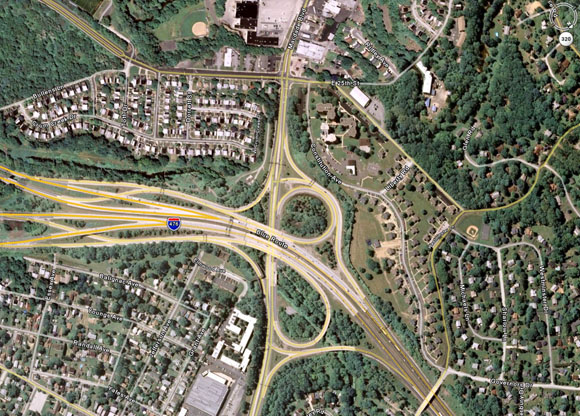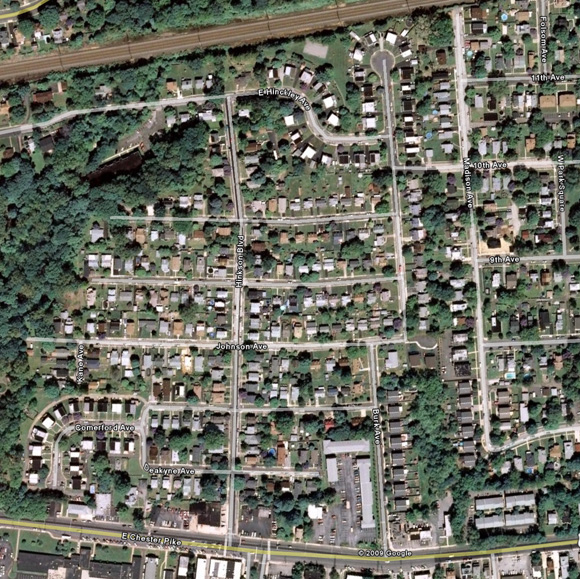Chester, PA
General Description (1919 report):
"Chester is now practically a suburb of Phildelphia constituting a part of its southwestern industrial distric and lying along the Delaware River. Greater Philadelphia is the largest ship building center in the world and Chester includes some of the large plants of the Emergency Fleet Corporation and that of the Sun Ship Building Corporation. There are also the great works of the Eddystone Rifle Plan of the Midvale Steel & Ordnance Co., the Eddystone Plant of the Baldwin Locomotive Works, manufacturing locomotives, and the Eddystone Munitions Co., manufacturing shells. All the latter are at Eddystone, a borough in the east environs of Chester. In 1910, Chester had a population of 38,537. By September, 1918, it had 80,000 to 100,000 with 2,000 to 3,000 in the environs...It was, however, still to all intents and purposes an overgrown country town, and reckoning
five people to a house, it had housing for only about 53,000 people."
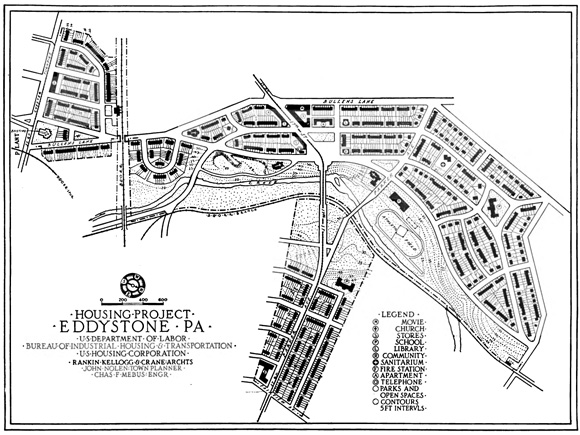
1919 excerpt describing the design of the Chester site at Eddystone:
Area planned: 167.43 acres. Housing planned: Detached houses, 2 families; semidetached houses, 134 families; row houses, 922 families; apartments, 70 families; total, 1,128 families. Single workers in dormitories, 608.
"The series of sites which for convenience we called the Eddystone project lay as close to the industries to be served as under the circumstances it was practicable to put them. On account of the differences of topography, location, and land value on the one hand, and difference in the kind of people to be housed on the other, the whole plan divided itself into several different units.
"First, the area... adjacent to the Eddystone Rifle Co. plant, an intensive development of row houses for
lower-paid workmen.
"Second, north of the Baltimore & Ohio Railroad, west of the park... an area of larger lots and row houses spaced more openly and interspersed with some semidetached houses, for workmen who are higher paid.
"Third, east of the park, on both sides of Parker Avenue a development similar to the second, somewhat simpler, cheaper and less ample.
"Fourth, west of the park...and area on cheaper land, offering the largest lots, and semidetached houses, to those who would purchase room and greater privacy by a somewhat higher payment and a longer walk or ride to their work.
"Fifth, temporary dormitories on Eddystone Avenue."
The Eddystone site today
Aerial View Today
Renderings, 1919
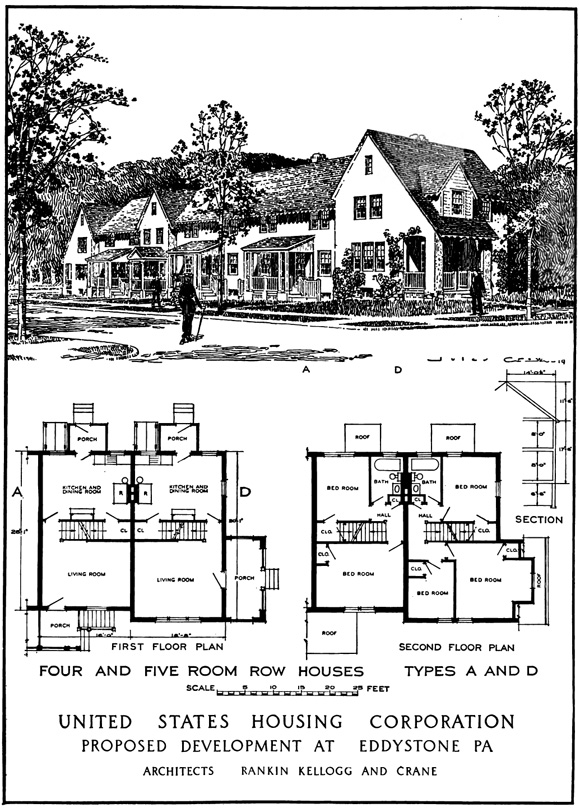
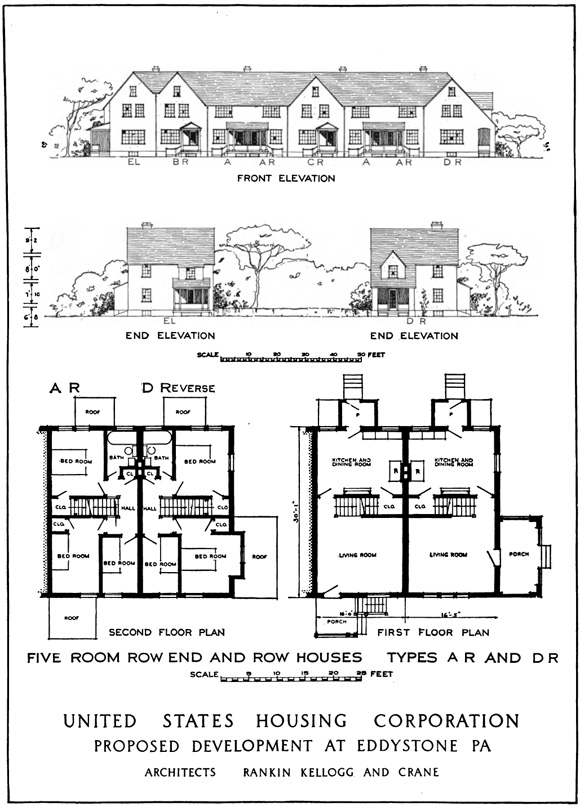
1919 excerpt describing the design of the Chester site at Ridley Park:
Area planned:
54.19 acres. Housing planned: Semidetached houses, 60 families; row houses, 483 families; apartments, 22 families; total, 565 families.
"The Ridley Park site was about 2 miles from the benefited industries, but connected with them by the Philadelphia and Chester turnpike...The value of the land was high, and the development therefore had to be intensive to be at all economical. There were not in the neighborhood any local stores, schools, or shurches at all sufficient to serve the proposed additional population."
"Opposite the main entrance to the property we planned to acquire and reserve a small area to prevent the loss of value in our development which would come if cheap stores or undesirable houses were built in this location... In almost every case the vistas down the streets were planned to be effectually closed by buildings of sufficient importance. The diagonal relation of the two pairs of semidetached houses to the central green is unusual, but we believe that it would be pleasant...The economical location of the moving-picture theater is worth noting. The auditorium occupies the cheaper land within the block, only the entrance taking up valuable street frontage."
"The houses, princiapally of brick, were planned in groups...practically uniform in plan, but a sufficient and very pleasing variation in elevation has been accomplished by skillful grouping and taking advantage of change in grade."
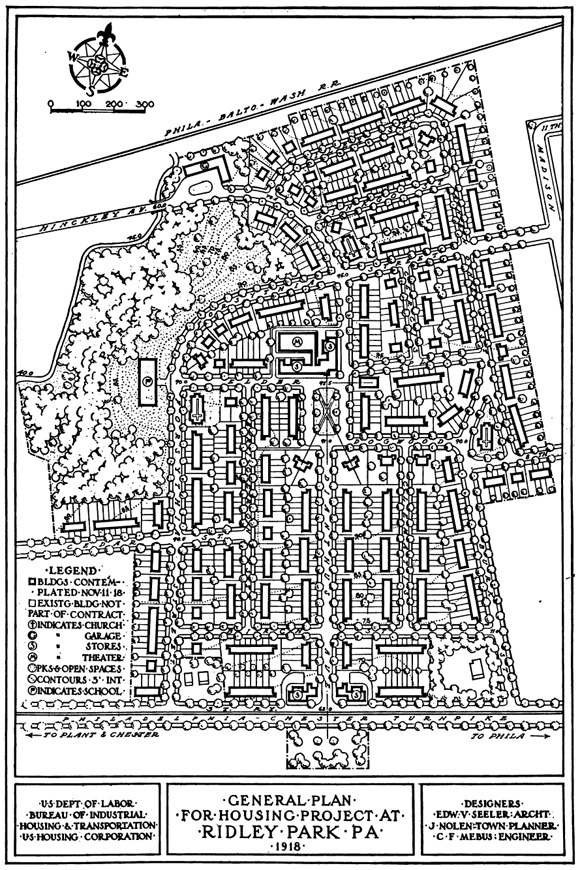
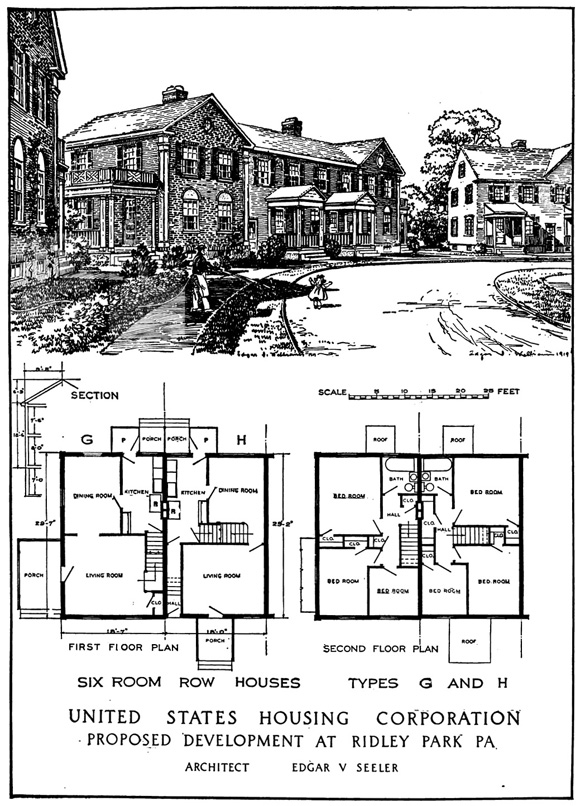
The Ridley Park site today
